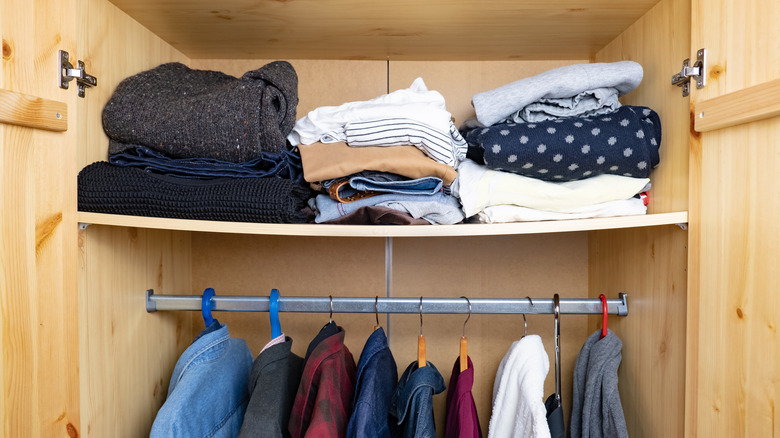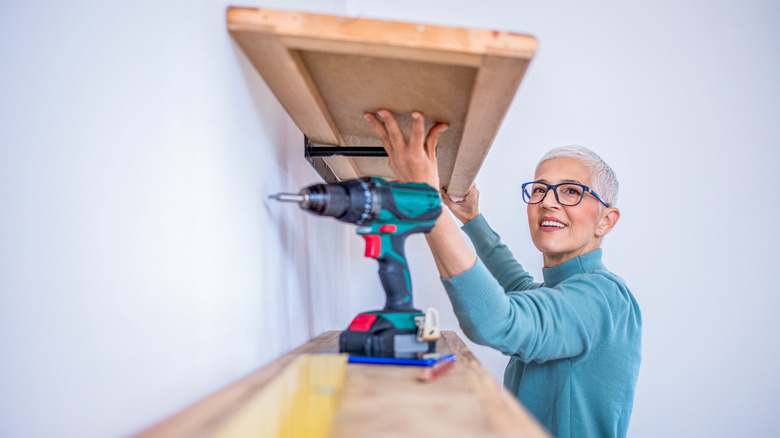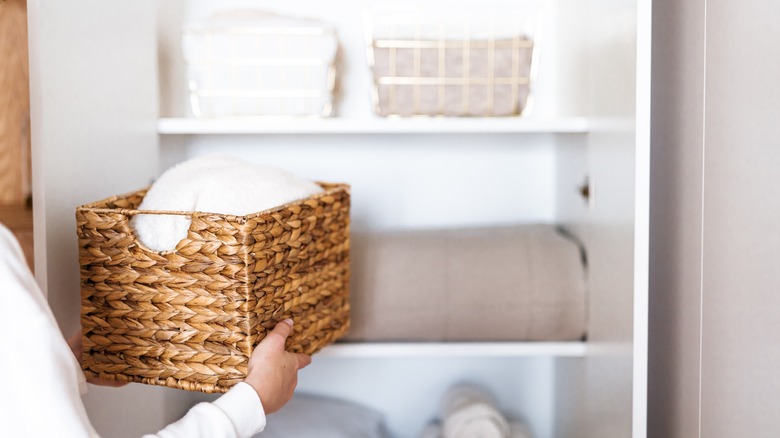Keep The Shelves In Your Cabinets From Sagging With These Helpful Tips
There are some quirks in a home that aren't worth stressing over or spending enormous energy trying to fix. A wobbly side table or chipped paint on your walls might be annoying but neither are borderline disastrous. A sagging shelf in your cabinets, on the other hand, can be a dangerous waiting game. While that bent curve might just look like a minor eyesore sitting among all your other shelves, there could be a moment when it gives out entirely.
To avoid worst-case scenarios like injuries or broken décor (and best case save yourself from the shock that comes from the crashing of a shelf), using preventative measures is always a better idea than cleaning up the aftermath. The first few fixes won't have you going out to buy brand-new shelves either. There are several ways to keep shelves from sagging, from adding reinforcements to flipping a warped board around that serve as perfect antidotes to sagging shelves.
Tips to save a sagging shelf
You have a few choices for dealing with the unsightly dip and potential fiasco of a sagging shelf. If it's a relatively strong material and the shelf has warped with age or moisture, a quick hack is to flip over the sagging shelf in question and slot it back in. The weight of the objects should help straighten it and even out the bend.
It's also possible to add reinforcements on multiple spots on the shelf depending on its configuration and type. You can start by adding extra pegs for an easy, low-lift solution. If that doesn't help, drilled-in wall supports can be fashioned. This can go on the front as a small support strip, in the back, or on the sides of the shelf.
There are also clever tricks you can utilize depending on the type of saggy shelf you're dealing with. You can solve a dipping shelf in a bookcase, for instance, by hiding plywood in a book that'll support the center where the shelf is sagging. This "support beam" fix can really work for any shelf — just add a strong reinforcing pillar where the surface dips.
Think about what you're storing on your shelves
Sagging shelves can be caused by the material the unit is made from or the heft of the items that are being stored there. Knowing this, you can tackle either (or both) of these factors.
First, think about the material your shelves are made from. If it's relatively flimsy MDF or similar, you might want to reserve these units for lightweight objects and limit what you stack and store on them. If it's heavy-duty metal or made solely out of thick wood, these shelves will be better suited to keep your book collections, heavy décor, and hefty home essentials safe and secure. If you're looking to buy new shelves, look for oak, pine, and other hardwoods as these tend to be stronger.
Sometimes, you might just need more storage space and your current shelves are overloaded. There are a few uncommon places to add shelves around your home that'll accommodate extra things and provide relief to surfaces bogged down by heavy items. Shifting some of the weight can stop sagging and return your shelves to their original, supportive state.


